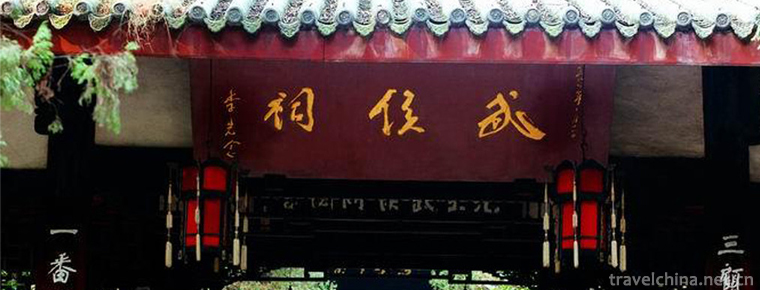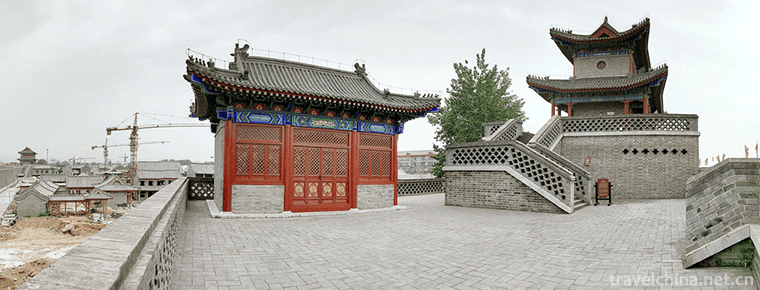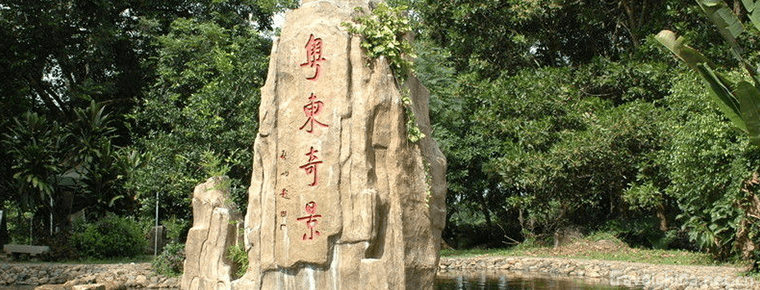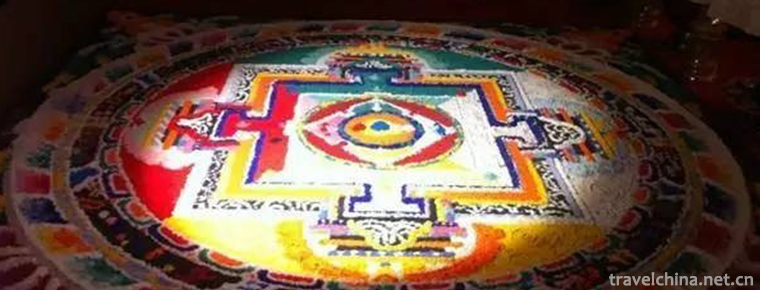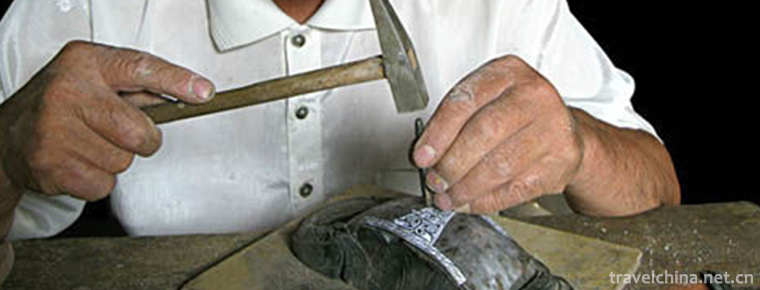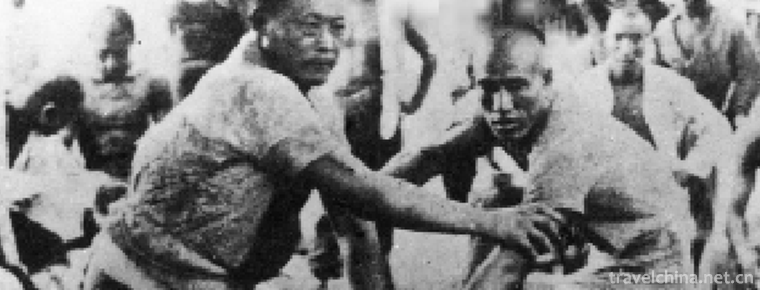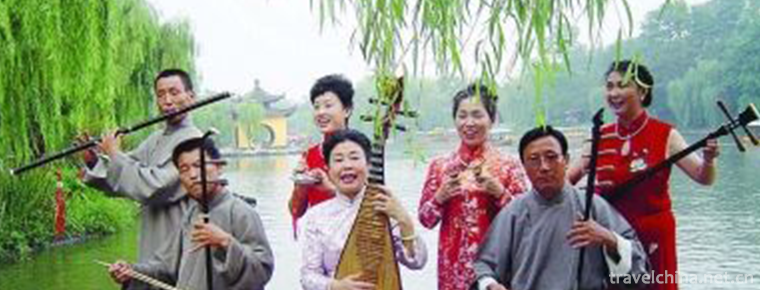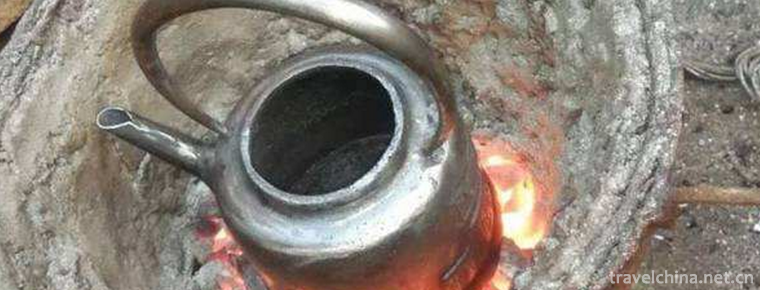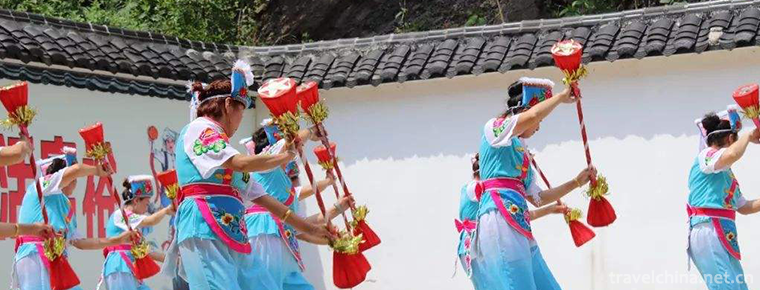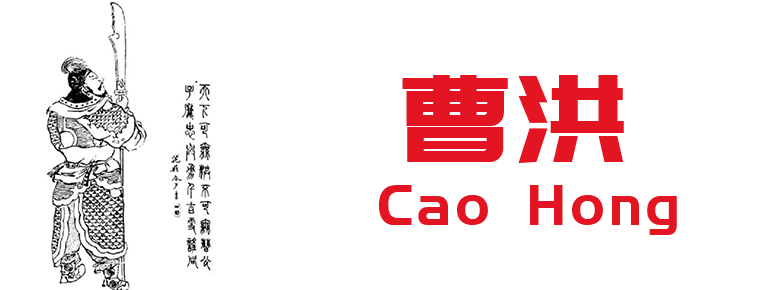Cantonese opera Yuequ
Cantonese opera
Cantonese Opera is a popular Cantonese dialect area in Guangdong and Guangxi, and has spread to Hong Kong, Macao, Southeast Asia and the Americas where Cantonese overseas Chinese live. It is a variety of opera performed in Cantonese dialect.
Cantonese opera originated from opera tune, and in the early days of Qing Daoguang, it was germinated by the musicians of the Eight Music Class who sang alone; in the early days of Tongzhi, after the inheritance and development of the blind female artist Shi Niang, it became mature; in the Republic of China, it began to introduce bright female artists to sing on stage, and Cantonese opera entered its heyday; after the founding of New China, Cantonese opera experienced revival, low tide and re-emergence. The stage of prosperity.
Cantonese Opera emphasizes vocal art, which can be divided into three categories: big throat, flat throat and sub-throat. It has strong musicality, beautiful melody and abundant board style. It takes Bangzi and Erhuang tunes as its main body and absorbs local ballads, ditties and minors as its supplement. In addition to inheriting the traditional solfeggio, the performance forms also developed rap, singing, performing singing, group singing, chorus and so on.
On May 23, 2011, Guangdong Opera was approved by the State Council to be included in the third batch of national intangible cultural heritage list.
Historical Evolution
Eight-tone Class Period
Cantonese Opera began in Bayin Class and became popular from Daoguangjian in Jiaqing in Qing Dynasty to Tongzhi in late Xianfeng (about 1820-1862). Initially, the Eight-tone Class consisted of eight musicians, playing western Qin Opera introduced from other provinces with musical instruments, and representing different characters in the opera with different musical instruments, so it was called "Western Qin Class". After joining the singing, the Qing Dynasty Xu Ke's "barnyard notes" in the "eight tones" section has a record: "Eight tones, to play and sing as one of the business, Guangzhou has. There are all kinds of operas sung in the Pearl River Delta. They are not disguised, but use gongs and drums: "They are well-equipped, light-equipped and low-cost. They can perform in various places such as ancestral halls, temple fairs, halls of large families, etc. In addition to folk festivals in the Pearl River Delta region, they always have the custom of playing gongs and drums, while the Eight Music Class is good at playing gongs and drums." Playing music, therefore, the "Eight-tone Class" has been widely accepted by the local people. At that time, wealthy families, business shops and even government offices invited the "Eight-tone Class" to play on major festivals or festive occasions to create a festive and lively atmosphere.
In 1854, in response to the Taiping Heavenly Kingdom Movement, Li Wenmao, a Cantonese opera artist, organized a revolt against the Qing Dynasty with Cantonese opera artists as the backbone. After that, Cantonese opera was banned, and many Cantonese opera artists joined the "Eight-tone Class". At that time, Guangzhou and Foshan were the places where Cantonese opera artists concentrated most, so the number of eight-tone classes in these two places increased greatly in a short time.
During the period of Xianfeng (1851-1860), in order to adapt to the various tunes of local opera and local opera, a big eight-tone class composed of 24 people appeared. At this time, the Cantonese opera sung by the eight-tone group had the main artistic characteristics of opera art, such as speaking, watch, playing and singing, but it did not have the art of "singing, doing, reading and playing" of opera art. Technical means. Therefore, the "Eight-tone Class" period is the beginning of the formation of Cantonese Opera.
Shiniang Period
In the early years of Tongzhi in Qing Dynasty, the professional team of blind female artists known as "Qu Ji" (known as "Shi Niang" in Guangzhou) began to appear. Early Shiniang mainly sang wooden fish songs, Nanyin and Cantonese euphemisms. During Tongzhi period (1862-1874), she began to sing Cantonese operas. They inherited the singing art tradition of the Eight-note Class, replaced the Eight-note Class with one or two self-playing and self-singing forms, and quickly won the audience with the advantages and forms of singing. From 1862 to 1917, nearly 60 years, is the "Shiniang" period in the history of the development of Cantonese opera, is also the popularization period of the development of Cantonese opera.
At the end of the Qing Dynasty, there was a special adoption set up by a wealthy old "Shi Niang" who trained blind women to sing Cantonese opera and play musical instruments for selling and singing "Tangkou" in the future. Female artists trained in "Tangkou" can sing along the street with poor appearance and talent, while those with general appearance and talent are arranged to sing in restaurants, tea houses, opium restaurants and other places. Those with better appearance and talent can be invited to perform in the guilds or halls of large families. Because of the fashion of listening to music in restaurants and teahouses, there is a fixed venue for Cantonese opera singing, which can be performed normally under any climatic conditions, creating favorable conditions for Cantonese opera singing to attract a large number of audiences. At the beginning of the 20th century, the first floor of Baohua Road in Guangzhou initiated the singing form of "one or two chairs". In the teahouse, the platform was built up with wooden boards, a tea table was set on the platform, and a chair was set on both sides. Two "teachers" were invited to play and sing by themselves every day, which was welcomed by the audience. In this case, some tea houses in Guangzhou and the Pearl River Delta, Hong Kong and Macao have followed suit. Therefore, the period of Shiniang is also called the period of "one or two chairs". Since the "Shiniang" era, Cantonese Opera has its own repertoire. Some long works, with many characters, are performed by the unique artistic technique of "Shi Niang" who plays the role of one person with many angles and one person with many tunes. In the period of Shiniang, a precedent was set for the use of Xiaoqu as a lyric-filling performance.
At the end of the Qing Dynasty and the beginning of the Republic of China, there were Yilan Hall of Chen Ji on Qingping Road and Lan Guifang of Cao Ji on the eighteenth Fu. Xueji, the master of Yilantang, was an experienced teacher. She was over 80 years old at the beginning of the Republic of China, but she was still energetic. More than ten teachers, such as Runjiao, Runtao, Ruiyi and Ruilian, were trained and singing well. At that time, "players" (high-level amateurs of Cantonese and Cantonese music) in Xiguan area of Guangzhou often came to these halls to start shooting with "Shi Niang" and string songs. Players later formed a "private partnership" (folk music club), both playing musical instruments and singing Cantonese songs, and gradually some non-blind women entered the ranks of singing Cantonese songs. On the first or fifteenth day of the first day of the lunar calendar or on the occasion of the celebration of the celebration of the Holy birthday, there are often activities of singing in the shed everywhere in Guangzhou.
Actress Period
In Guangzhou, the first floor of the Cantonese opera singing mode of "one chair or two chairs" was created, and in 1918, the bright female artists were introduced to the stage. Blind female artists are more popular with fans because they are better than blind in terms of physical condition and stage image. In less than ten years, the ranks of "female actors" have been growing, and the development of Guangdong Opera has since entered the period of "female actors".
During the period of "female actress", great changes have taken place in Cantonese opera. One is to classify the ten lines of opera originally inherited from other provinces, namely, the last ten lines of opera, the last ten lines of opera, namely, the last ten lines of opera, the last ten lines of opera, namely, the last ten lines of opera, Sheng, Dan, Ugly, Wai, Xiao, Tie, Fu and Za, into three major categories, namely, the throat, the flat throat and the Zi larynx, a collection of all kinds of Danjiao singing, has become a female role's special voice; Ping larynx is the peaceful voice of male characters in the literary arena; Big larynx is the high-pitched and exciting voice of male characters in the martial arts arena, also known as the hegemonic voice. This change is conducive to giving full play to the advantages of short and concise quyi troop, so that Cantonese opera can use one person with many angles and one person with many tunes to perform complex plots and multi-role scripts. The second is to change false voice to real voice, which leads to the change of Cantonese Opera from E to C, which emphasizes closeness to life and nature, and helps to protect the voice of actors. This change makes the singer's voice from sharp to mellow, and enhances the aesthetic feeling of vocal music. Thirdly, Guangzhou dialect is replaced by "theatre mandarin", which makes it easier for listeners to understand the lyrics and thus is widely welcomed.
The Bangzi and Erhuang tunes in Cantonese Opera also made a series of innovative developments during the period of "female actress". Firstly, breaking the rigid limitation that the original Bangzi and Erhuang tune systems can only have one cavity to the end in the same program, and can not be mixed and connected by the two tune systems, a repertoire compiled by the interconnection of the two tune systems has begun to appear; secondly, on the basis of Bangzi and Erhuang tune systems, new Bangzi and Erhuang tune systems have been created one after another, and new Bangzi and Erhuang tune systems have also been created. Such as "Jiaozi Tune" and "Huilong Tune". Thirdly, on the basis of Bangzi and Erhuang Tune System, we have created the second anti-tune system and love tune system. Fourthly, we regard the melody as a minor song and fill in the lyrics to sing.
Meanwhile, minor tunes are also widely used in the creation of Cantonese operas. Cantonese opera has a strong integration, regardless of ancient, modern, Chinese and foreign, all the tunes used are used for reference. Cantonese Opera absorbs and uses minor tunes from the south of the Yangtze River, most of the tunes of Cantonese music, some melodious and fluent "times tunes" and "pop music" as well as foreign folk songs and film episodes.
The "tea house" actress in the teahouse pub endows the Cantonese opera with the artistic characteristics of the teahouse, which closely connects the Cantonese opera with the way of life, entertainment and leisure in the Cantonese dialect area, thus forming the unique Cantonese opera cultural customs in Lingnan.
Since then, Cantonese Opera has entered its heyday with five symbols: First, the number of Cantonese Opera troupes has increased dramatically. While Cantonese Opera Ban Club sprang up in the city, the folk music club "private partnership bureau" and "gong and drum cabinet" also spread throughout the countryside. During the 20 years from 1918 to 1938, both professional and amateur Cantonese opera teams developed rapidly. Not only do they have many fans in South Guangdong, but their influence also extends to overseas Cantonese-Chinese communities. Second, a large number of tea houses with Cantonese opera teahouses have sprung up. From Guangzhou, Foshan, Dongguan to Hong Kong, all teahouses and pubs are elegant in Cantonese opera singing. Tea tasting and music appreciation has become a fashion for leisure and social activities. Cantonese opera culture is closely integrated with tea house culture. Teahouses provide performing places for Cantonese opera, and Cantonese opera has won a reputation for tea houses. Thirdly, music clubs for training talents of Cantonese Opera came into being. Music club is the base of training "players". They specialize in the reform and creation of Cantonese opera singing and promote the development of Cantonese opera. Fourthly, a large number of copies of Cantonese Opera have been printed. Fifth, there are many famous Cantonese opera masters. Pinghou four major small stars, Xu Liuxian, Zhang Yueer and Zhang Huifang, were famous Cantonese opera artists at that time. Among them, the "star chamber" of small stars was unique and had a far-reaching impact on future generations. Later, those who sang flat throats learned more about "Star Tune", and there were four generations of descendants of Li Shaofang, Huang Shaomei and Liang Yurong. There are also big throat star Xiong Feiying, Yuanmiaosheng, Zithroat singer Qiongxian (Zhang Yujing), and so on. In addition, a large number of Cantonese music composers and performers with high artistic attainments entered the music and art circles, accompanied by actresses, designed singing tunes and created ditties, and introduced western musical instruments to accompany them, which greatly enriched the Cantonese music board style and made the singing more beautiful and beautiful. At that time, composers included Wang Xinfan, Wu Yixiao, Zeng Pusheng, Chen Guanqing, Yang Zijing, etc. Performers included Liang Yizhong Jianquan, Lu Wencheng, Yin Zizhong, He Dasha, Cheng Yuewei, He Langping, etc.
From 1938, when the Japanese invading army occupied Guangzhou to 1945, the cause of Cantonese opera suffered a heavy blow. After the "July 7" Lugouqiao Incident, Cantonese opera artists began to sing works implying resistance to Japan, such as "Victory of the War of Resistance", "Public Enemy of Human Beings", "Hate Lock Five Yangs City", Xu Liuxian's "Hot Blood and Loyal Soul" and "Blood Debt He". Time is up, Zhang Huifang's "Killing the Enemy and Comforting the Soul of Fang", "Hate Locking the Lugou Moon", "Fuma Yueqing Duck", "What's the Price of Glory", "Fire Dancing" and so on. In August 1938, Cantonese opera artists in Yunzhong, China and Hong Kong launched the "One Immortal Movement" to support the War of Resistance Against Japan. The campaign calls on every audience in the music world to donate one immortal (HK$1 at that time equals 10 milliseconds and 1 milliseconds equals 10 immortals) and the owner of the music world to donate one more immortal. From 1939 to 1941, Cantonese opera artists held a grand performance to support the anti-Japanese front every year, reflecting the patriotic feelings of Cantonese opera artists.
During the period from the victory of the Anti-Japanese War in 1945 to the founding of the People's Republic of China, Cantonese Opera gradually recovered and had certain changes and developments, mainly reflected in the following aspects: with the introduction of amplification equipment into the music world, "female actress" changed from sitting to standing singing, He Lifang, known as the "queen of three throats", Guan Fanmei, known as the "old waiter of Tongtai", and Li Shao, a new star singer. Fang and other new stars have risen; male singers have emerged, and developed a kind of "New Fantasy Song" with certain acting actions and funny content. Liao Zhiwei and Guan Chumei are the representatives of such programs.
After the victory of the War of Resistance Against Japan, Cantonese Opera did not return to the early prosperity of "female actress", nor did it develop further. The reason is that the popular music, the "Times Music", which rose at that time, occupied part of the Cantonese opera market, and the government at that time discriminated against actresses as "the bottom nine". In 1946, the Guangzhou Municipal Government issued a policy requiring "actresses" to wear bracelets like prostitutes in the streets, in order to show the difference between them and other officials, wives and ladies, and impose "prohibition tax on acts of female actors". This aroused the indignation of Cantonese opera artists, who fought by holding press conferences, protesting petitions and holding charity shows to raise funds. This action has won wide sympathy and support from all walks of life, and ultimately forced the authorities to withdraw discriminatory policies.
New China Period
Since the founding of the People's Republic of China, Guangdong Opera has greatly improved and developed. The social status of artists has been greatly improved, and they are no longer called "actresses". The development of Cantonese Opera after the founding of the People's Republic of China can be roughly divided into three stages: the first stage is the stage of recovery and development of Cantonese Opera; the middle stage is the period of low tide of development of Cantonese Opera; and the second stage is the period of revival and prosperity of Cantonese Opera.
1. Recovery
From the founding of the People's Republic of China to 1960, the state formulated and promulgated the policy of "letting a hundred flowers blossom, weeding out the old and bringing forth the new" and "contending among a hundred schools of thought" for the prosperity of art. The competent cultural authorities also implemented a series of policies beneficial to the cause of folk art. In the past ten years, the cause of Cantonese Opera has developed vigorously, showing a thriving scene.
In 1952, the Guangzhou Federation of Literary and Art Circles organized a group of artists to form the first Guangzhou Quyi Brigade, which was subsidized by the government. Bai Jurong, a Guangdong Opera amphibious artist, was the leader. The members included Xiong Feiying, Guan Chumei, Xue Jueming, Li Yanqing, He Jinquan, Lin Yan and other leading actors and Zhu. Hai, Deng Chufeng, Yao Chao and other musicians. The team cooperated with the work of the country in the early days of the founding of the People's Republic of China and did a lot of propaganda work in the form of folk art. During the period of resisting the United States and aiding the DPRK, Captain Baijurong led the team to hold a charity performance, which was well received by the masses. In 1953, the Guangzhou Cantonese Opera Work Group was expanded with the team as its base.
In 1954, the Guangzhou Academy of Quyi was founded. In 1956, it was renamed Guangzhou Quyi Festival. In the same year, the Guangzhou Cultural Bureau helped identify nearly 400 qualified artists to form 33 Quyi groups (including 3 blind artists and 1 Jingqu group). Apart from the former Quyi Festival, the two groups of Quyi, a group with more famous artists, are still under the leadership of Quyi Festival, while the other groups are under the management leadership of each district in the city.
In 1956, Guangzhou Municipal Culture Bureau, in order to improve the performing environment of the performers, stipulated that a small room must be set up for the performers to make up, change clothes and rest in the teahouse and pub where the music circle is set up. The Municipal Culture Bureau also subsidized the music circle to improve the performance conditions. Since then, the relevant departments in Guangzhou have built more than ten well-equipped Quyi Fairs in the urban areas, such as Yue, Hongli, Cathay Pacific, Xinhua and so on, which have created good conditions for promoting the development of Quyi undertakings.
In November 1958, Guangzhou Municipal Bureau of Culture merged the Guangdong Folk Music Troupe, a group of elite Cantonese musicians, with the Quyi Festival of famous Cantonese opera artists, to form the Guangdong Music and Quyi Troupe. The troupe has made many reforms and innovations in the art of Cantonese Opera, and has trained a large number of outstanding actors. Xiong Feiying, Guan Chumei, Li Shaofang and He Lifang are still galloping in the art circle. A large number of artists, such as Huang Shaomei, Tan Peiyi, Baiyanzi, Li Danhong, Zhong Kuizhen and He Zishuang, have emerged. To create a large number of new repertoires, perform a variety of folk songs and tunes, and learn to transplant folk performances, including cross talk.
In 1958, the Guangdong delegation, with the Guangdong Music and Music Troupe as the main force, went to Beijing to participate in the first national performance. Xiong Feiying, an old artist and great throat artist, won great praise for his performance of "Li Kui Nao Jiangzhou".
In 1959, tuners and singers of the Guangdong Music and Music Troupe visited the Soviet Union and Hungary under the name of the Guangdong Folk Music Troupe and were welcomed by all countries. After returning to China, the delegation toured Tianjin, Jinan and other cities.
In 1960, the Guangdong Music Troupe and the Guangzhou Military Region Soldier Acrobatic Troupe jointly formed the Guangdong Music Troupe and performed 16 performances in Macao.
In the same year, he Zishuang, a sub-laryngeal singer of the Guangdong Music and Music Troupe, and Zhu Hai, a musician, joined the Chinese Art Troupe in cooperation with Premier Zhou Enlai's visit to perform in Myanmar. In 1963, Liu Tianyi, a performer of the Guangdong Music and Music Troupe, was selected by the Central Committee to join the Chinese Art Troupe and visit Japan to perform.
In March 1962, at the first Yangcheng Concert held at Zhongshan Memorial Hall in Guangzhou, a special performance of "Cantonese Opera Singing Appreciation Conference" was arranged to show the artistic features of various genres of Cantonese Opera in history. At the same time, in order to implement the Notice of the Ministry of Culture on Strengthening the Excavation of Traditional Opera, Traditional Opera and Opera repertoires, the excavation and collation of the "Eight Major Opera Versions" of Cantonese Opera was jointly organized by the Guangdong Musicians Association, the Guangdong Opera Artists Association and the Guangdong Cultural Bureau, and in 1964, Bailishi's Wife was published. 。 During this period, a group of famous writers wrote many Cantonese opera scripts, contributing to the development of Cantonese opera.
2. Low tide
In the 1960s, the "Left" trend of thought became more and more intense, and the cause of Cantonese music was said to be "deeply influenced by imperialist culture and deeply branded with colonial commercialization", so it was totally denied. During this period, political movements continued, resulting in a hypocritical atmosphere and many poor-quality works. Guangdong Music Troupe can still perform normally, but many regional folk professional music troupes have been abolished or merged, resulting in a sharp decline in the performance team.
During the "Cultural Revolution", professional and amateur Cantonese opera activities in Guangzhou stopped altogether. A considerable number of Cantonese opera artists have been hit. In 1968, all the members of the Quyi Team in the district were transferred to work. Guangdong Music Troupe and the municipal professional art groups were sent to the "May 7th" cadre school (actually farm) for "transformation". At the end of 1969, some members of the Guangdong Music and Music Troupe were transferred back to Guangzhou to resume their business activities, while others were transferred to other industries.
In 1972, Cantonese Opera resumed its performance as an annual propaganda event at Guangzhou Spring Fair. In 1978, with the gradual implementation of the anti-Japanese policy, artists in Guangzhou were forced to change their careers, and they could voluntarily choose to re-engage in folk art.
3. Re-prosperity
In January 1977, in commemoration of the first anniversary of Premier Zhou Enlai's death, Guangdong opera circles created and performed new works such as "Water Residents Memory Premier Zhou", "Meiyuan Wind and Rain", "Bayi Gun". Since that year, the Guangdong Music and Music Troupe has resumed its normal performance and enrollment. Subsequently, a number of district quyi teams reorganized their teams and resumed their work. Hongli, Cathay Pacific and other folk art halls have also resumed business. In May 1979, the Guangdong Federation of Literature and Arts and the Guangzhou Federation of Literature and Art jointly held the Cantonese Opera Singing Appreciation Meeting, which triggered frequent exchanges of Cantonese Opera art in Guangdong, Hong Kong and Macao. In the early years of resumption of performance, the Cantonese Opera career once flourished, but with popular songs becoming fashionable, various new entertainment undertakings developed rapidly. With the rapid development, the market of traditional culture has been impacted. The audience of Quyi also declined sharply. Normal performances were unsustainable, and various Quyi halls were forced to close again.
In order to reverse the situation, the cultural authorities have taken various measures to support the cause of Cantonese opera. First of all, Guangdong Yueju School was entrusted to hold the 7th four-year opera class for the Guangdong Music and Music Troupe, which trained a number of talents and became the backbone of the Guangdong opera industry in the future. We will vigorously support the development of folk Cantonese opera singing activities, encourage the establishment of amateur Cantonese opera associations - private associations, and lay a good mass foundation for the revitalization of the cause of Cantonese opera. Guangzhou's cultural authorities also encourage qualified members of private partnerships to form professional or semi-professional performing teams.
After the efforts of the 1980s, the cause of Guangdong Opera has made great progress, mainly in the professional improvement and amateur popularization of Guangdong Opera. Professional Cantonese opera circles have emerged a group of actors who are deeply loved by the audience, such as Chen Lingyu, He Ping, Liang Yurong, Ye Youqi, Li Minhua, Yan Peizhen, as well as a group of outstanding musicians and Cai Yanzhen composers. Mass activities of Cantonese opera have also been widely popularized. Various forms of music societies have been established, including private associations, folk art societies, enterprise workers'folk art clubs, amateur folk art societies organized by cultural museums, among which there are also musicians and composers. In order to revitalize the cause of Cantonese opera, the Federation of Chinese Literature and Art Circles and the Association of Chinese Quyi Artists launched the selection of "Hometown of Chinese Quyi" and set up a base for the creation of Chinese Quyi. Nine municipalities and districts in Guangdong were rated as "the home of Chinese folk art", accounting for more than half of the country. All kinds of Cantonese opera competitions and forums have also promoted the popularization of Cantonese opera.
Artistic Characteristics
Performing Characteristics
The performance form is one or two standing singers, and many others are accompanied by Gaohu, Yangqin, Pipa, Hengxiao, Long Throat, Second String, Violin (a local folk instrument in Guangdong), Short Throat and Moon Piano. Later, "rap", "play and sing" and "performance and singing" appeared.
The singing content of Cantonese Opera is mainly some folk classical stories which are well known to the public, especially the emperors, generals and gifted ladies, which have magical and romantic colors, and the people's life as the theme, reflecting the social reality, ethical concepts and local customs at that time, and are deeply loved by the general public. From the early performers of rivers and lakes, to the star artists of the heyday, to the "enthusiasts" of the present Guangdong Opera Private Partnership Bureau or the vast majority of Cantonese opera fans, regardless of men, women and children, can sing Cantonese Opera; Cantonese Opera singing venues from the early tea houses, streets to today's various types of stage; Cantonese Opera performance form is rich, from the Cantonese Opera to the Cantonese Opera. The basic single-stop singing at the beginning has developed into a variety of forms such as singing, rap, performance and group singing, which can be solo, duet and group singing. If the singers perform on the stage, they will generally wear costumes that conform to the role of the opera.
The costumes of Cantonese opera singing are not particular. Generally speaking, women wear cheongsam, while men wear Tang and Zhongshan costumes, as well as opera costumes.
Singing characteristics
In the early stage of Cantonese opera, the singing styles of Xiaosheng, Wusheng, Xiaowu, Huadan, Gongzu, Huafa, Zhengdan, Zhengsheng, Lao Dan and Ugly Sheng were all classified according to the line of practice. After the Revolution of 1911, it changed from fake voice to real voice, from stage Mandarin (also known as "Guilin Mandarin") to Guangzhou dialect. It was divided into three singing methods: big throat (also known as "hegemony tune" or "left-handed". It belonged to male horn singing, and its tone was mostly in high-pitched area, flat throat (male horn singing, middle-pitched area) and Zi throat (female horn singing).
Qupai board
There are seven types of music plate in Cantonese Opera, including Bangzi, Erhuang, Bangzi, tunes of various forms of music in the same area, ditties and minors, ditties created by Bangzi and Huangxuan method, miscellaneous music "Guangdong Music" and other folk music.
Band Accompaniment
Cantonese Opera has developed from Solo and solo to orchestral accompaniment. The band has a small lineup of five people and more than a hundred people. Its composition is divided into the following five basic accompaniment instrumental combinations: the soft bow combination with Gaohu, Yangqin, pipa, horizontal chord and long throat as its core (mostly used for flat throat, sub-throat and literary singing accompaniment); the second string is used as the accompaniment. The combination of the hard bow (mostly used for accompaniment of the big throat and martial arts singing) with the core of the violin (unique national musical instrument), the moon piano and the short throat tube, and the hard bow plus the blowing and beating combination of the sonar and the gong and drum (mostly used for accompaniment of the brand music and the specific singing cavity); the combination with the core of the coconut hu, the Dongxiao, the pipa, the Yangqin (or the zither) (specially) It is used for accompaniment of Nanyin and other tunes; it absorbs the combination of violin, saxophone, electric guitar, xylophone and other core instruments (mostly mixed with soft bow or alternately accompanied by flat throat and sub-throat).
Art School
Dunn Manwei, a small star in the music and art circles, was a "flat throat" singer in the 1930s, who originated the "star tune" genre. The singing style is characterized by light and delicate lines, gentle words and lingering euphemisms. The singing style is characterized by natural turning, gentle words and lingering euphemisms. The singing style is gentle and sobbing when the singer is sad. The singing style is lively jumping, fluent lyrics and pleasant feelings when he is happy. Her second and third generations, Li Shaofang, Huang Shaomei, He Ping and Liu Feng, and her fourth generations, Ye Youqi and Liang Yurong, sang a large number of famous star tunes.
Xu Liuxian, a Cantonese opera singer with flat throat, is known as "Liuxian Tune". "Liuxianqiang" has a sweet charm and correct pronunciation. It is a heroic, steady and deep feeling. His representative works include "Refolding Long Pavilions and Willows", "The Story of the Western Chamber", "Dreaming of Red Mansions", "I Mistook Qing" and so on.
Classic repertoire
The early repertoires of Cantonese Opera mostly came from the "Ban Ben" of Cantonese Opera, and began to accumulate their own unique repertoires in the period of "Shi Niang". The representative works are "Eight Famous Melodies", namely "Brief Comments on Wives", "Discrimination of Talents and Explanation of Demons", "Daiyu Burial Flowers", "Six Langs Sin Zi", "Abandoning Chu to return to Han", "Lu Zhishen Becoming a Family", "Recommendation He Wenxi《 Xue Zhongxian.
The influential representative programs in the period of the Republic of China include "Night Warfare Horse Chao", "Wusong Da Mao Lion Tower", "Yuewu Mu Banshi" and "Wind Running Dream", "Again Folding Long Pavilions and Willows", "Xiaoxiang Night Rain" and so on.
In the second half of the 20th century, the new eight scenes of Yangcheng, namely "Shuangqiao Smoke and Rain", "Luogang Fragrant Snow", "Etan Night Moon", "East Lake Spring Dawn", "Zhuhai Danxin", "Jiangling Sunrise", "Baiyun Songtao", "Yuexiu Overlooking", "Niuhao Talk", "Zhou Yu Writing Table", "Qinqiong Selling Horses" and "Mu Guiying Hang", were the representative programs newly compiled in the second half of the 20th century. Shuai, Huamulan Camp Tour, Cai Wenji's Return to the Han Dynasty, Ruan Lingyu, Guang Ling Jing, etc.
Epidemic areas
Cantonese Opera is mainly popular in Guangdong (including Hong Kong and Macao) and Guangxi (Cantonese dialect) regions, and spread to Southeast Asia and the world where Cantonese Chinese live together.
Inheritance and Protection
Current situation of circulation
Since the end of the 20th century, the living space of Cantonese Opera has shrunk dramatically. Artists and audiences have tended to age and are in an endangered state, which urgently needs support and protection.
protective measures
The protection of Cantonese Opera begins with the compilation and publication of music scores and anthologies. Since the 1950s, a number of Cantonese Opera music scores and anthologies have been published successively. Secondly, the publication of Yuequ writings, from different aspects of the introduction of Yuequ, including the introduction of Yuequ writing and singing, the introduction of the history of Yuequ, the introduction of famous actors of Yuequ, as well as popular books of Yuequ.
The exhibition and competition of Cantonese Opera is an important part of the protection of Cantonese Opera. The performance of Cantonese Opera is mainly to hold concerts and concerts of Cantonese Opera. Cantonese Opera Competition is mainly held by the Municipal Quyi Artists Association, TV stations, Provincial Cultural Department and other departments.
Heritage figures
Li Yueyou, female, born in 1955, from Foshan City, Guangdong Province. The project of intangible cultural heritage (Yuequ Xingqiang) is a representative successor at Guangdong level. Li Yueyou used to sing throat, then changed to sing flat throat, especially the star cavity. In 1997, she was invited to Hong Kong to participate in the performance of "Provincial and Hong Kong Little Stars with Songs". She formally worshiped Chen Jinhong, the only apprentice of the Little Star, as a teacher and became the third generation of inheritance of the Star Opera. She has 20 years of rich experience in Cantonese opera singing. Her singing style is gentle, graceful, quiet and resentful. Her emotions are delicate. She has not only the strong charm of the star tune, but also her own personality characteristics. Li Yueyou was awarded the title of "Top Ten Cantonese Opera Singers in Foshan Civil Society". In 2011. Li Yueyou established the "Cantonese Opera Star Opera Art Research Center" in Sanshui District. Self-financing purchase of audio, musical instruments, equipment and clothing props, carry out inheritance activities; successively held "Star Music Elegant Rhyme Gala" Cantonese Opera Gala, "Star Music Heart, Star Fan Gathering" Gala, "Star Cantonese Rhyme Yao Xingfu (Square)" many appreciation meetings, to participate in "Sanshui District commemoration of the 100th anniversary of the birth of small stars" star celebration. More than 20 performances of Cantonese opera, such as "Foshan Cantonese Opera Elite Friendship" concert, etc. Li Yueyou also opened "Quyuan Art Circle" in Sanshui, the hometown of young stars, to provide communication platform for star-chamber enthusiasts, attract more young people to contact the star-chamber, learn the star-chamber, and contribute to the spread of the star-chamber fireworks.
Chen Lingyu, female, born in 1962, from Jiangmen City, Guangdong Province. First-class actor and representative successor of intangible cultural heritage (Cantonese opera) project in Guangdong Province. Chen Lingyu graduated from Guangzhou Culture and Art Secondary Professional School and was admitted to Guangdong Music and Music Troupe in 1977. She learned from famous Pipa singers Li Danhong and Bai Yanzi, Lao Yanjuan and Tang Triumphantly, and from her brothers'songs, she also worshiped Luo Yusheng, chairman of the Chinese Quyi Artists Association and master of Jingyun Drum. She sings with a sweet tone, a wide range of voices, a round orthographic voice and a lush voice. She can be both high-spirited and vigorous, but also sad and angry, full of charm. For the first time, she held "Chen Lingyu 96 Beijing, Tianjin, Shanghai, Guangzhou, Hong Kong, Macao and Guangdong Opera Tour Concert" in Beijing, Tianjin, Shanghai and other areas where artists are well-known. She won the reputation of "the first sound of crossing the river" and promoted the exchange of North and South Opera. His representative works are "Grief Song Guanglingsan", "Xianglin Sister", "Ruan Lingyu", "Zhaojun complaint", "Autumn Sound Awakening the Soul of the Nation" and so on. With her beautiful performances and solid performance skills, she has traveled all over the world and won the love of many fans. She went to Singapore, Australia, the United States and other places to give performances and lectures. She has won the first Peony Award of Chinese Quyi, the fifth Luxun Award of Literature and Art in Guangdong Province, the Guangdong Provincial Award of Publicity and Culture, the Guangzhou First Award of Literature and Art, and the Guangzhou Prize of Literature and Art. Chen Lingyu is a member of Guangdong Quyi Artists Association.
Liang Yurong, female, born in 1970, from Foshan City, Guangdong Province. First-class actor and representative successor of intangible cultural heritage (Cantonese opera) project in Guangdong Province. Liang Yurong graduated from Guangdong Music and Music Troupe in 1988 and was instructed by many famous artists such as Lao Yanjuan. In 1991, he worshiped Huang Shaomei, a singer of "Star Tune" and was one of the fourth generations of "Star Tune". On the basis of the tradition of "star chamber", she seeks for new beauty and diversified forms of performance. Her singing, regardless of voice, luck, vocalization, singing tone and charm, can bring into play the artistic features of "Star Tune" which are soft, euphemistic, melodious and expressive. She has held two solo concerts in Guangzhou in 1993 and 1995. She has performed in Hong Kong, Macao, Singapore and Europe for many times. She is known as "the latest generation of Cantonese opera star voice heir", and is the youngest solo singer in Cantonese opera and music circles. His representative works include "The New Sound of Young Phoenix Praise Great Men", "South Guangdong Carnival", "Re-ascending Meixianglou", "Tianya Bi Heqing Yuanyuan", "Flowers After Love Martyrdom", "Weaving Rainbow Road in South Country", "Returning to Man on Wind and Snow Night". In 2002, Liang Yurong innovatively staged the large-scale opera Baolian Lantern. She was awarded the Peony Prize for Chinese Quyi twice, the Luxun Literature and Art Prize for Guangdong Province twice, the National Television Starlight Prize for two times, the Chinese Federation of Literature and Art awarded the title of "young and middle-aged artist of virtue and art" and the Guangdong Literature Federation awarded the title of "star of the cross-century".
Selected as a non-survivor
In 2009, Guangdong Opera was included in the list of non-relics in Guangdong Province.
In 2011, Cantonese Opera was included in the national non-legacy list.
The Value of Quyi
Born in the Pearl River Delta in the 19th century, Cantonese Opera is a new type of folk music with a history of only over 100 years. Guangdong Opera was influenced by the trend of national democracy in the course of its formation, and inherited the various characteristics contained in the modern Lingnan culture of "compromising China and the West, integrating the past and the present", especially with the openness and compatibility of Lingnan culture, less conservativeness and solidification; dared and good at drawing from the ancient and modern Chinese and Western cultures and arts. Nutrition, digested and used by oneself, enables the rapid development and growth of koji varieties. Cantonese Opera has not only the characteristics and charm of traditional folk art, but also the strong local characteristics and the flavor of the times, which has high artistic research value.

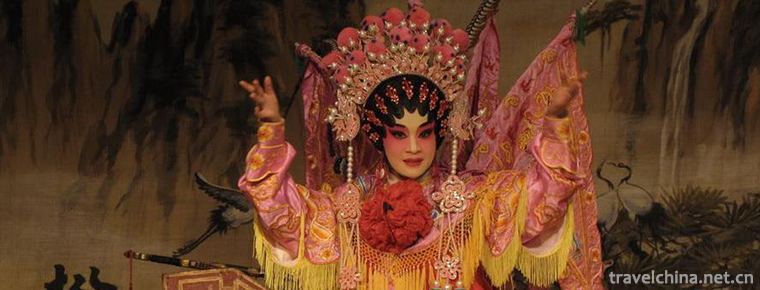
-
Wuhou Temple in Chengdu
Martial Marquis Memorial Temple,Chegdu city,Sichuan Province.
Views: 212 Time 2018-09-29 -
The ancient city of Qingzhou
Qingzhou ancient city is one of the ancient nine states. It has a history of more than 7,000 years, a history of civilization of more than 5,000 years.
Views: 192 Time 2018-12-08 -
The Simatai Great Wall
Simatai Great Wall is located in the north of Simatai Village, Gubeikou Town, northern Miyun District, Beijing. It is adjacent to Gubeishui Town. The wall of Simatai Great Wall is built on the steep m.
Views: 147 Time 2018-12-10 -
Lang Mountain Scenic Area
Langshan is located in the northwest side of the hinterland of the Yuechengling Mountains, which is the longest in Wuling Mountains. It spans Xinning County and Resource County.
Views: 210 Time 2018-12-12 -
Green Island Tourist Villa
Green Island Tourist Villa is one of the eight new scenic spots in Chaozhou, the national demonstration sites of leisure agriculture and rural tourism, the base of science and technology.
Views: 104 Time 2019-02-06 -
Painting of Painted Sand Tancheng
He said that if we compare life to a picture scroll, if the world wants to be detached from things and hearts, should it also laugh away the glory or frustration,.
Views: 360 Time 2019-04-04 -
Lead tin carving
Lead and tin carving, a local traditional skill in Jingzhou City, Hubei Province, is one of the national intangible cultural heritage..
Views: 276 Time 2019-06-10 -
Flyover wrestling
In the 1930s, when Peiping wrestling was very popular, Peiping wrestling was famous all over the country. At that time, the strongest wrestling master of Peiping overpass was Shen San (Shen Yousan), B.
Views: 372 Time 2019-06-21 -
Yangzhou Qingqu
Yangzhou Qingqu, also known as "Guangling Qingqu" and "Weiyang Qingqu", is a form of Musical Singing developed on the basis of popular songs and minors popular in Yangzhou during t.
Views: 126 Time 2019-07-10 -
Smelting and Casting Techniques of Pig Iron in Yangcheng
Yangcheng pig iron casting technology was invented in the 6th century BC. Yangcheng pig iron smelting and casting technology in the smelting and casting process first crushed the ore, then roasted at .
Views: 103 Time 2019-07-10 -
Encouragement of Sangzhi Battle
Sangzhi Bai people's fighting drum is mainly distributed in seven Bai villages and towns, such as Mahekou, Maidiping, Furong Bridge, Hongjiaguan, Zoumaping, Linxi River and Liu Jiaping. In other half .
Views: 419 Time 2019-07-25 -
Cao Hong
Cao Hong(? - two hundred and thirty two). Pei Guo Qiao (now Anhui) Bozhou People. Emperor Wei and Emperor Wei of the late Han Dynasty and the Three Kingdoms period Cao Cao From brother..
Views: 203 Time 2019-09-15
